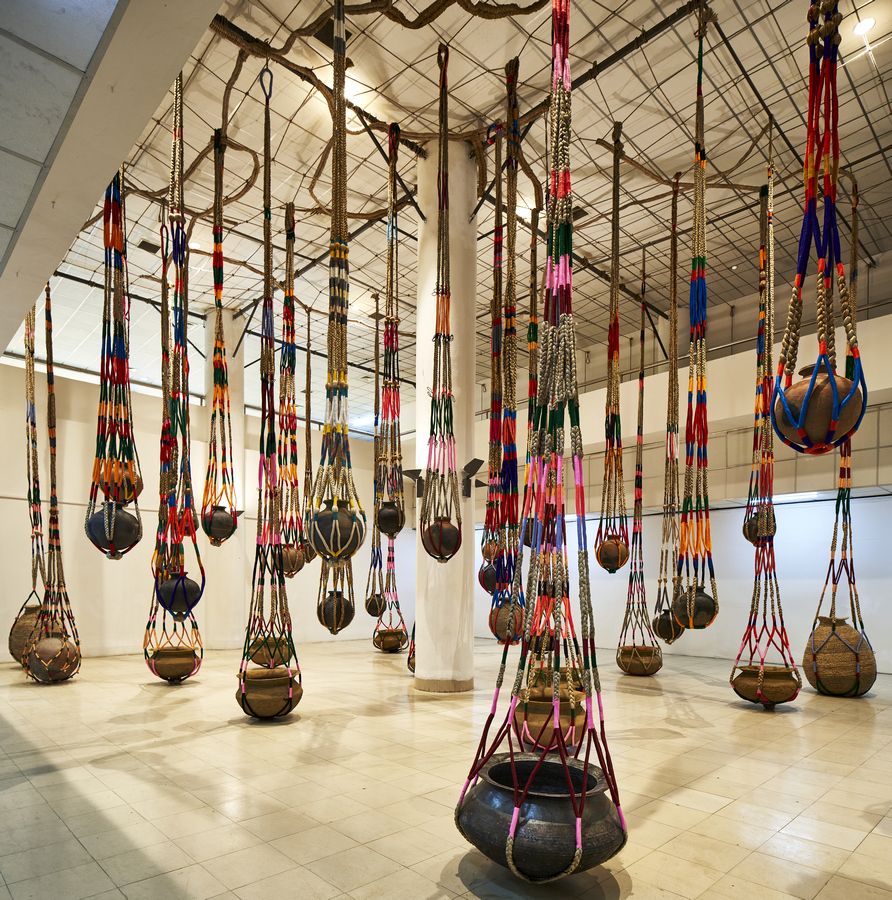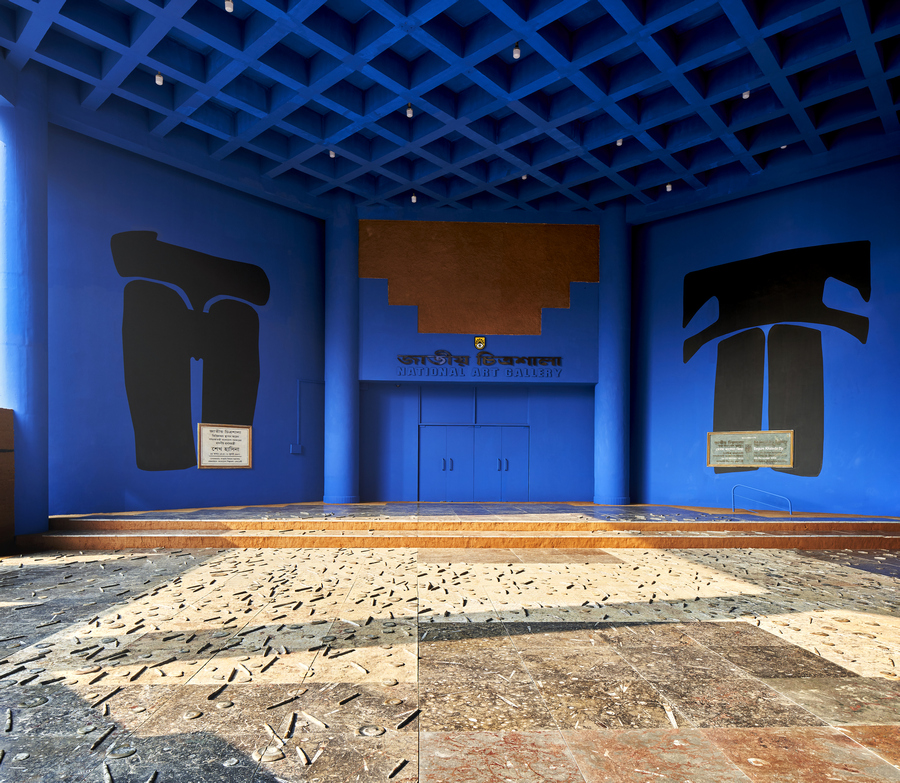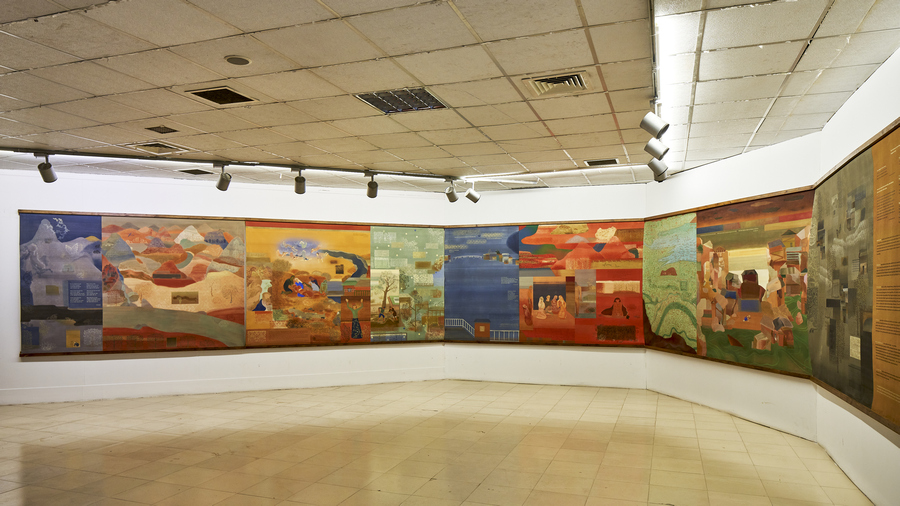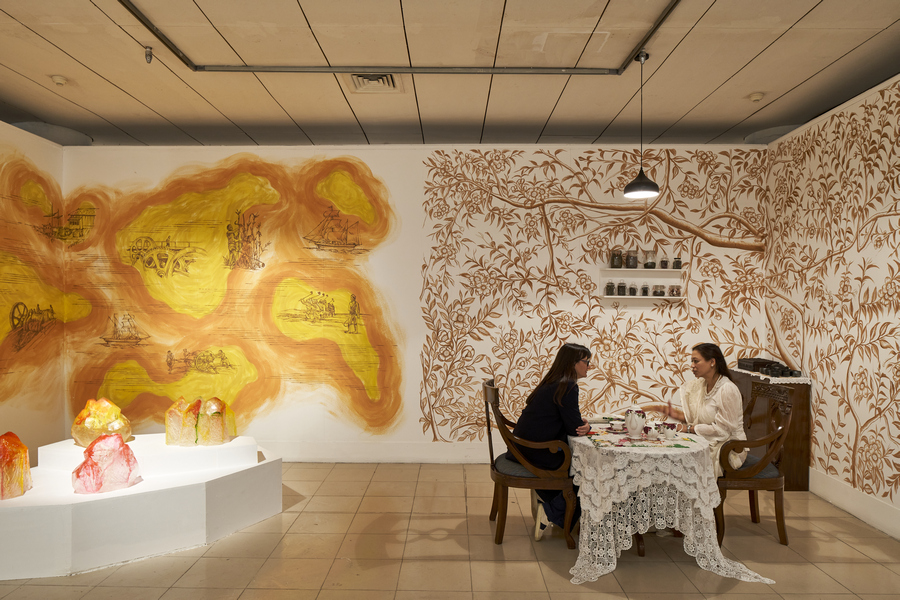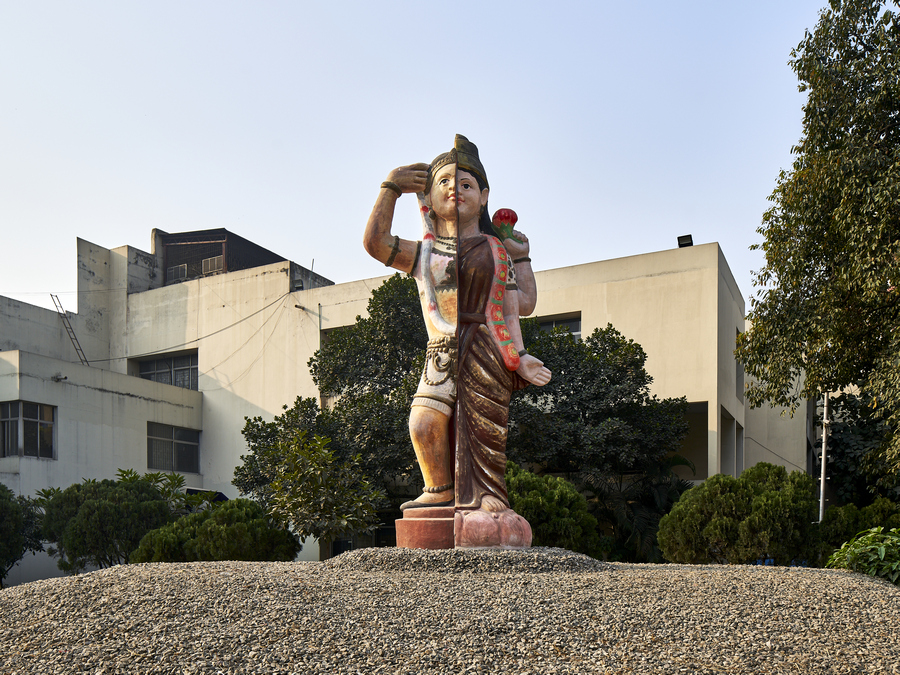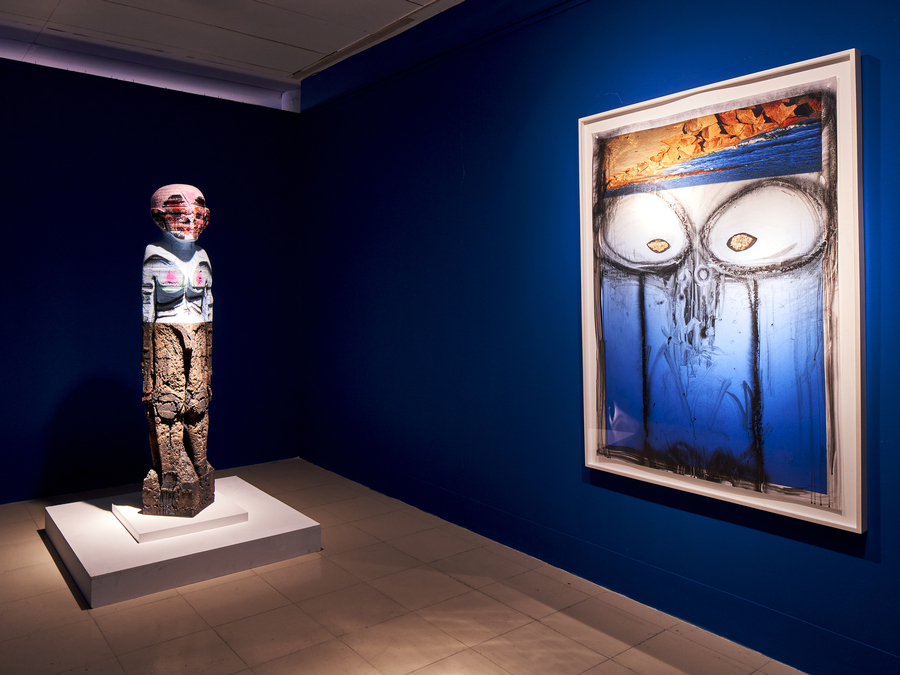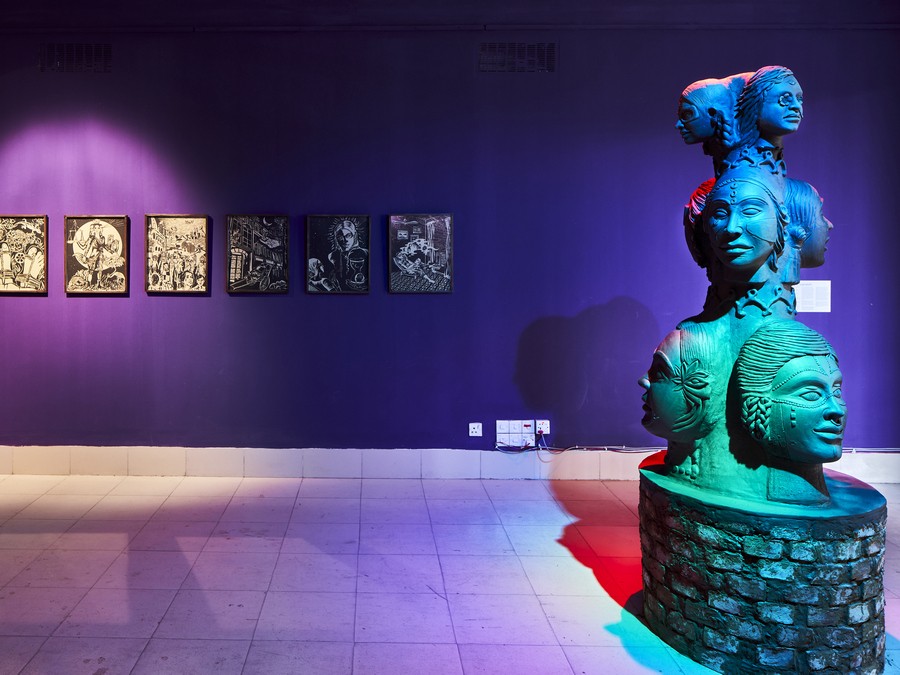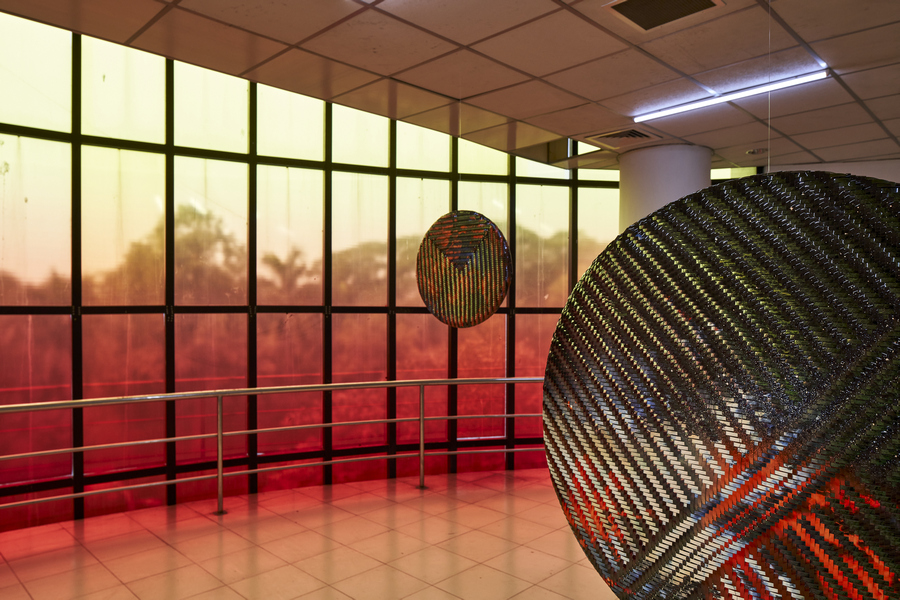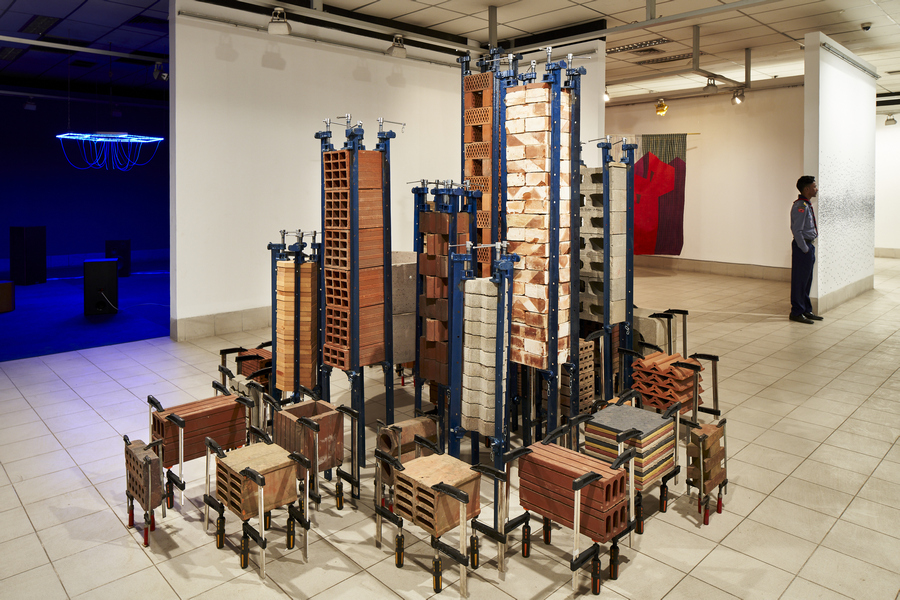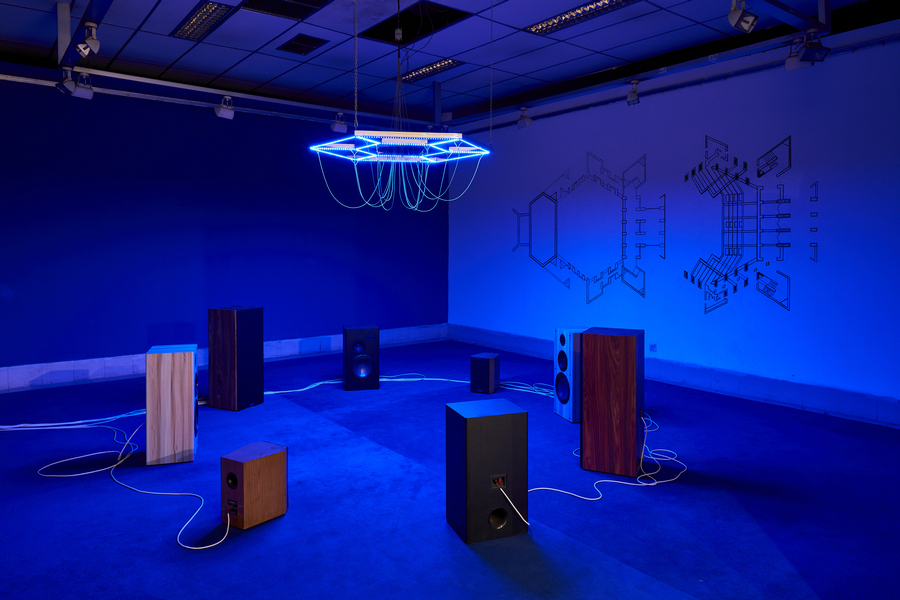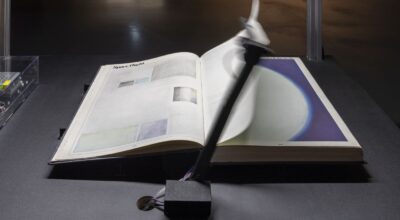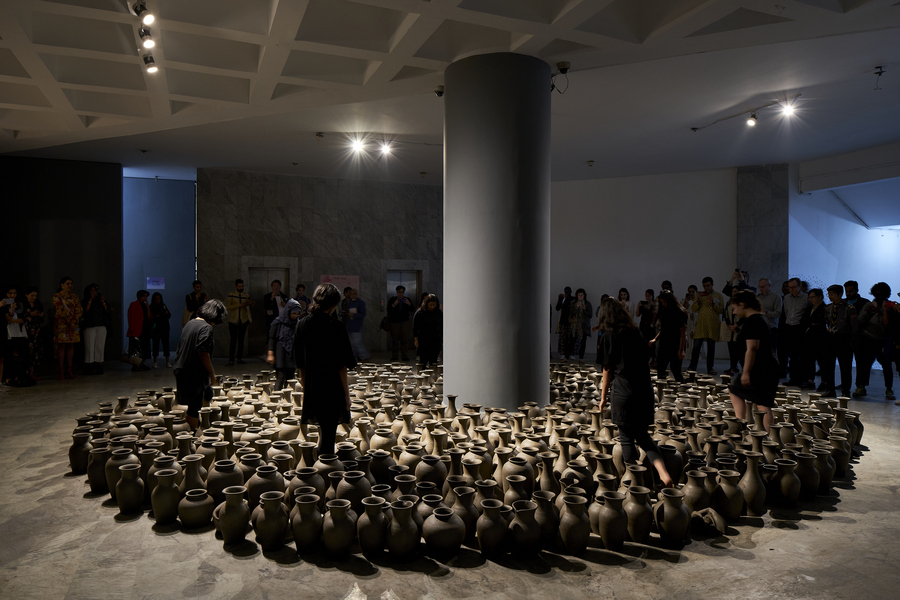
Seismic Movements.dhaka Art Summit 2020
Convening a critical mass of artists, thinkers and participants, the Dhaka Art Summit 2020 reconsiders (art) histories, movement, borders and fault lines. Its fifth edition, Seismic Movements, takes place February 7-15 at the Shilpakala Academy in Dhaka, Bangladesh, expanding its geographic and temporal scope and looking at movements generated from energy released from pressure -geologically, socially, politically, climatically. Thus, the Summit is not just an exhibition, it is a movement. And is neither a biennale. Although it takes place every two years, this format is simply for organisational and logistical purposes.
DAS is organized and produced by The Samdani Art Foundation (SAF), founded in 2011 by collector couple Nadia and Rajeeb Samdani. Built through alliances across Africa, Australia, South and Southeast Asia (and also extending into Europe and the US) this platform is free to the public and include contributions by 500 artists, scholars, curators and thinkers, in the form of panel discussions, performances and symposia.
What does a movement look like while it is being made and how do we learn from the lived experience of making one? DAS 2020 focuses on what is a movement and how do we ignite one beyond the confines of an art exhibition. “Inspired by the geological reading of the word ‘summit’ as the top of a mountain, Seismic Movements considers the various ruptures that have realigned and continue to shift the face of our moving planet”, says Diana Campbell Betancourt, Chief Curator of DAS 2020.
“Seismic movements do not adhere to statist or nationalist frameworks”, she adds. “They join and split apart tectonics of multiple scales and layers; their epicenters don’t privilege historical imperial centres over the so-called peripheries; they can accumulate slowly or violently erupt in an instant. DAS 2020 is about shaking up our understanding of the present and the past, creating opportunities to come together and make and write (art) history from new perspectives. We continuously work to break down barriers between art, film, craft, architecture, design, research, and institution production to think of new forms of togetherness”.
DAS 2020 touches upon planetary movements, geological movements, colonial movements, independence movements, social movements and feminist futures, spatial movements, the conditions that move us to act and the power that comes with moving collectively. It not just considers forms of artistic production, but also forms of ‘institutional’ production, that enable artistic practices and pedagogies, generating new vocabularies of socially organization and building better ways to create and live together.
Geological Movements
In the heart of the Bangladesh Shilpakala Academy, visitors will stand on an immersive installation by Adrián Villar Rojas made of 400-million-year-old ammonite and orthoceras fossils. These now extinct species of undersea creatures thrived for 300 million years, swimming across the super-ocean Panthalassa from the safety of their shells and witnessing the creation and breakup of the single continent Pangaea. Their geological presence in the Himalayas speaks to a time when these melting peaks were once under water, as much of Bangladesh is expected to be in 50 years. This work serves as a metaphor to think of our past, present, and future on this planet outside of human-bound time, and to consider common ground on which to come together.
This section of the exhibition also includes Elena Damiani’s collage of watercolour renditions of storming dust particles in the atmosphere as captured by NASA, and works by Jonathas de Andrade and Matías Duville.
Colonial Movements
Ongoing legacies of colonialism establish and maintain conditions of exploitation throughout the global majority world (the world outside of Europe and North America which hosts most of the human population on the planet). Naked capitalism and internationalism, sometimes masked under the guise of religion and development aid, continues to drive networks of power controlling the globe. Revealed through its extractive actions of planting and uprooting indigenous goods and people, colonialism still extends deep into the furthest reaches of the Earth through the seeds of commodities. Artists across generations have made works that reflect how histories of land are intimately entangled/embedded with narratives of hunger, dispossession and ultimately erasure. Colonization is inscribed in the physical and cultural DNA of the world we inhabit, and the artists working across these spheres help us navigate through complex webs of greed and addiction to imagine solidarities for alternative and autonomous futures.
Visitors enter DAS 2020 through a newly commissioned performative installation by Kamruzzaman Shadhin in collaboration with the artist-led initiative Gidree Bawlee; the work considers the role of the British-era railways in changing Bengal’s lands from growing food (rice) to producing cash-crops (jute) through migration stories found in traditional folk songs from Bangladesh.
Nilima Sheikh created one of her largest murals to date for DAS 2020, chronicling women’s ongoing struggles in Kashmir, the epicenter of the destruction left in the wake of the British Partition of India and rising Indian nationalism. Otobong Nkanga extends her ongoing project Landversation (2014 – onwards) to Bangladesh after iterations in Brazil, Lebanon, and China. This project was developed through a month-long residency in Dhaka and sets out to explore and compare the complex relationship between the human subject and land, dealing with the contradictory ways in which we inhabit the earth and are dependent on it.
Candice Lin’s works establish a network of connections between historical and contemporary Asian and African diasporas in the Americas, as well as their generational traumas. Papaver Somniferum is a tapestry where a person is ravaged by snarling beasts, speaking to the necropolitical horrors of life in the Caribbean for Asian and African workers brought across the seas to grow commodities for imperial consumption. In The Roots of Industry, Lin reinterprets an engraving of Bolivian silver mines by Theodor de Bry. The Andean potato was cultivated to feed indigenous miners mining silver and mercury in South America. This silver and the excess potatoes traveled across the sea and fueled the Industrial Revolution, changing the course of world history. In The Tea Table, Lin appropriates an engraving by John Bowles (c. 1710) which was a satire on affluent fashionable ladies and featured a devil lurking under the table as Envy drives Justice and Truth out of a door. In this rendition, Lin draws connections between tea, opium, and sugar by replacing the symbolic figures with images of tea production and opium abuse.
Tea has impacted cultures and changed the course of world history by bringing people together and tearing them apart: from the Opium Wars and the American Revolution to the mass movement of workers as part of plantation economics; from the fostering of friendships to marriage proposals through the ritual of tea ceremonies. Yasmin Jahan Nupur has arranged a tea party through a performative process. She has harvested the tea at home and, through the act of sharing, brings participants together to think more closely about the origins of this everyday commodity.
Independence Movements
The shared energy fueling movements and building constellations of solidarities across time and diverse geographies defies shallow geopolitical definitions that carve up the world. Artists played a major role in spreading the deep yearning for independence in what is now Bangladesh, as well as elsewhere in the global majority world. Creative individuals with conviction were willing to stake their position and shift the course of history by galvanizing people around their work which became the images, words, and songs to rally resistance and transform mere individuals into a collective force to be reckoned with. The artists in this movement chronicle the spirit of resistance and struggle for freedom, shifting from euphoria to disillusionment and back again. Independence is a spirit that needs to be kept alive and moved and nurtured across generations.
Antonio Dias is an artist whose transnational experiences colored his conceptual art practice. Supported by a Brazilian patron, he traveled to Nepal in 1976 ‘to buy paper for an edition’. He soon discovered that the kind of paper he imagined could not be purchased in a store. Over an intense period of five months in 1976–77, living near the Tibetan border with Nepali artisans, Dias adapted their paper-making process by mixing in plant fibers and materials such as tea, earth, ash and curry. A selection of these works are shown in DAS 2020.
Social Movements and Feminist Futures
What does an enfranchised future look like? Since the inception of the nation-state, not everyone has been considered a citizen with rights to protect. Throughout the world, the disenfranchised including peoples of color, indigenous peoples, and people of diverse sexual and gender orientation, continue to fight for spaces to endure, imagining how and when their security, their representation in and of the world is recognized. The artists in this movement employ fantasy and poetry to imagine territories that emancipate them from the everyday violence of capitalism, patriarchy, and political/religious fundamentalism. These worlds might exist in outer space, on the ocean floor, at the poles of the planet, or they may emerge from hiding places between the lines that seemingly restrict and foreclose uncertain histories.
Chitra Ganesh expands upon her exploration of gender and power in a futurist imaginary that takes the 1905 utopian, sci-fi, feminist novella Sultana’s Dream by Bengali author and social reformer Begum Rokeya as a point of departure to consider a world where men stay home, and women innovate new ways of being by harnessing the power of the sun. Ellen Gallagher imagines a parallel universe underwater in her Watery Ecstatic series, inspired by the legend of Drexciya (developed by the electronic music duo of the same name), which imagines a birth through death, where children of the pregnant slave women thrown overboard are born with gills and don’t have to come up to the oppressive world above for air. Nearly every society across time has imagery of women carrying pots of water on their heads. In his performative installation Movimientos Emisores de Existencia, Héctor Zamora explores what a life emancipated from this burden might look like as women smash the pots that weigh them down with patriarchal burdens.
Spatial Movements
The artists in this movement explore the spaces that we move through (physical, social, political, discursive) and the ways we are able to transmit stories and knowledge across (life)times, building bridges from past to present to future.
Clarissa Tossin explores the 21st Century desire for space travel in the wake of unprecedented environmental destruction in the Amazon, weaving together satellite images of deforestation in Brazil with Amazon.com boxes. The work shown, A Queda do Céu (The Falling Sky), further engages with themes of ecological precarity and social justice. The weavings combine satellite images of the recent fires in the Amazon with Nasa images of the Mars plane named after the forest (Amazonis Planitia), the Amazon River and the Milky Way. The patterns were made to resemble the geometric partition of land created by agribusiness mostly visible from satellite images or bird’s-eye view. The triptych suggests a constellation of planets that project ambiguous visions of futurity, post-human landscapes and the ruins of a world yet to come.
Collective Movements
The art scene of Bangladesh thrives on the energy and infrastructure built by artist-led initiatives who have developed networks and spaces to support their practice in the absence of centrally funded institutions and a local market for contemporary art. The Samdani Art Foundation supports many of these dynamic organisations through its Samdani Artist Led Initiatives Forum and grant program.
Working collaboratively with Kathryn Weir (Cosmopolis, Centre Pompidou Paris), Artspace (Sydney), Gudskul (Jakarta) -a public learning space established by ruangrupa, Serrum and Grafis Huru Hara (Jakarta)-, Para Site (Hong Kong), RAW Material Company (Dakar), and Alserkal (Dubai) the Samdani Art Foundation expands this platform at DAS 2020. The resulting platform is a confluence of exhibition programming and workshops between and across the collectives and the public on how to build and sustain grassroots institutions in contexts with little existing local infrastructure and how to work collaboratively. Collective Movements are a key theme of DAS 2020 which transforms the Bangladesh Shilpakala Academy into a “learning space established to practice an expanded understanding of collective values, such as equality, sharing, solidarity, friendship and togetherness.”
The Collective Body is an exhibition within Seismic Movements co-curated by Diana Campbell Betancourt and Kathryn Weir which crystallizes concerns pertinent to collaborative practice in Bangladesh, drawing parallels and creating unprecedented exchange with other collective movements emerging across Asia, Africa, Central and South America, and Oceania. Some of these concerns include the transmission of knowledge of long-standing aesthetic forms from rural to urban contexts, the environment, and historical movements around agricultural labor.
Other artists included in DAS 2020 are Damián Ortega, Fernando Palma Rodríguez, Olafur Eliasson, Daniel Steegmann Mangrané, Lucas Arruda, Annalee Davis, Marlon de Azambuja and The Otolith Group.
More information here
Featured image: Héctor Zamora, Movimientos Emisores de Existencia (Existence-emitting Movements), 2019-2020. Performative action with women and terracotta vessels, Courtesy of the artist and Labor. Photo: Randhir Singh
También te puede interesar
THIS TOO, IS A MAP. LATIN AMERICANS AT THE 12TH SEOUL MEDIACITY BIENNALE
The Biennale is concerned with systems imposed or created outside national borders, including transnational solidarities, 'underground' commitments, the coded mapping of data and infrastructure, as well as those of artistic and political communication.
LA EXPANSIVA 12° BIENAL DE GWANGJU. FRONTERAS IMAGINADAS
Con siete exposiciones principales, 11 curadores, 163 artistas de 42 países y, como novedad en esta edición, una serie obras comisionadas y pabellones "colaterales" presentados en colaboración con otras instituciones, la 12° Bienal de...
PÉREZ ART MUSEUM MIAMI LAUNCHES THE LATIN AMERICAN AND LATINX ART FUND
Pérez Art Museum Miami (PAMM) has just launched the Latin American and Latinx Art Fund, a new affiliate group created to support exhibitions and programming at PAMM for Latin American and Latinx artists. The...

